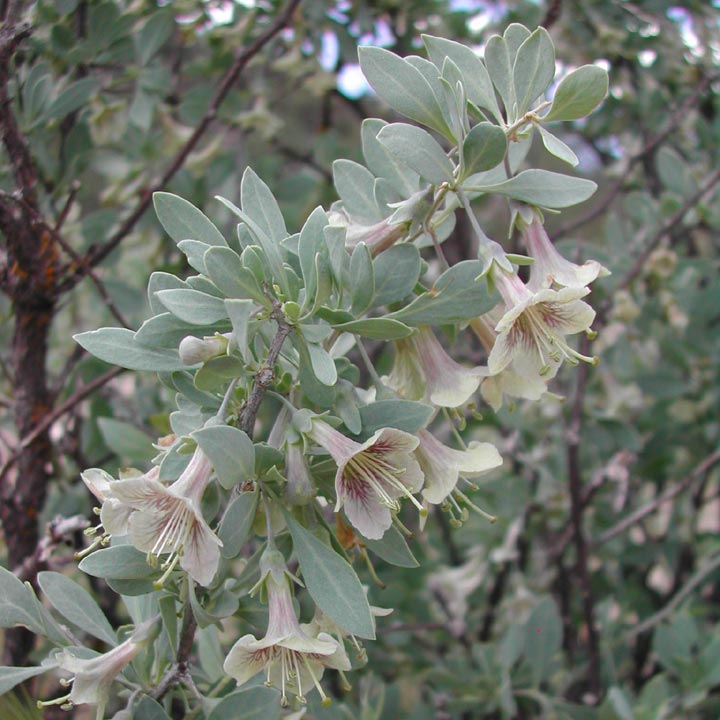Lycium pallidum
- Family: Solanaceae
- Common Name: pale desert-thorn
- Symbol: LYPA
- Description: CANOTIA 5(1) PLANT: Shrub 1-2 m tall, dense, intricately branched, thorny; branches often flexuous, yellowish, gray, or reddish to purplish black, glabrous or very sparsely puberulent; thorns slender and sharp. LEAVES: 1-5 cm long, 3-15 mm wide, glaucous green, glabrous, oblong-spatulate or oblanceolate to broadly elliptic; apex acute or rounded; base attenuate into a short petiole, the midvein and primary lateral veins usually visible. FLOWERS: pendulous, borne singly or in groups of 2-3 (Fig. 2G); pedicels slender, 4-16 mm long; calyx cup-shaped to campanulate, blue-glaucous, glabrous, 5-8 mm long, 5-lobed, the lobes lanceolate to ovate or elliptic, equalling or exceeding the tube in length, their margins sometimes sparsely pubescent; corollatube elongate-funnel form, 12-25 mm long, expanded conspicuously at the top, from white to lavender purple, most commonly greenish with purple veins, the 5 lobes oval or rhombic, 1/5 to 1/3 the length of the tube, their margins commonly remotely ciliolate; stamens exserted; filaments adnate to a little below the middle of the corolla-tube, the free base of the filaments and the adjacent corolla-tube pilose, or the filaments densely hairy nearly to top of corolla-tube; style varying in length from about equal to stamens to surpassing them. FRUITS: red or reddish blue due to glaucescence, ovoid, about 1 cm or slightly less in diameter, 4-50-seeded. n = 12. NOTES: Desert grassland, riparian areas, chaparral, pinyon-juniper woodland
Additional Images
- There are no additional images for this species.
